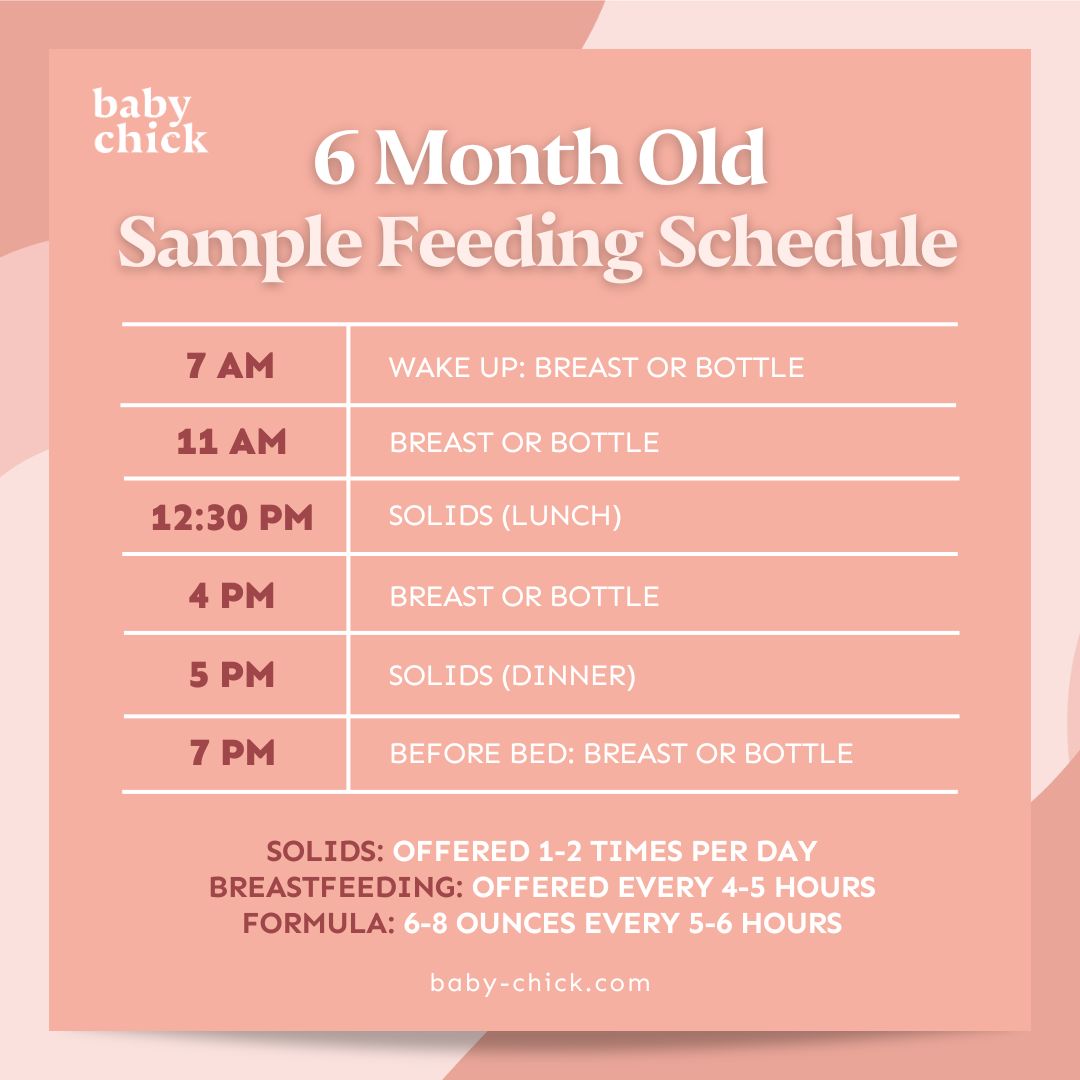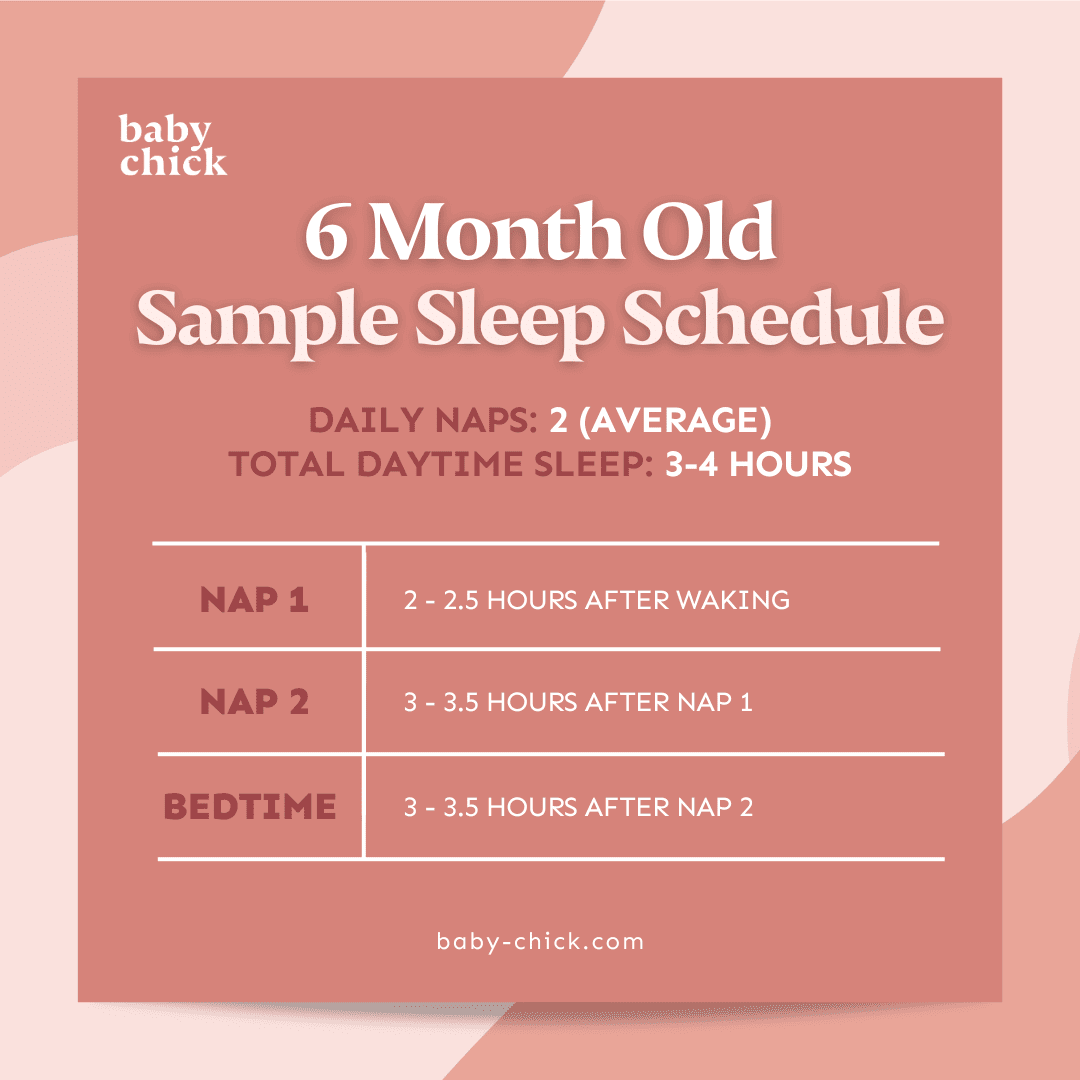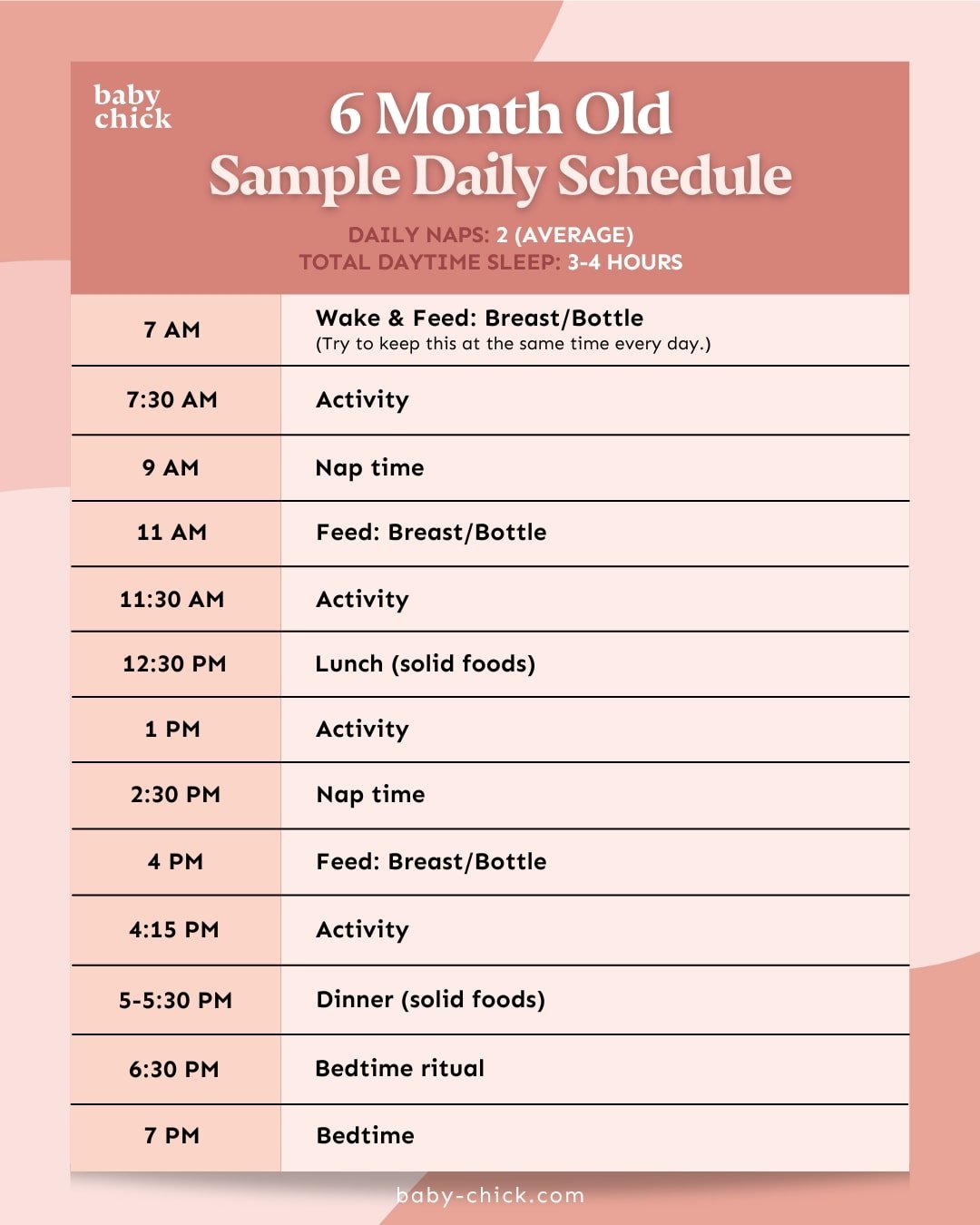
Congratulations; your baby has reached 6 months old! These first six months have been filled with immense growth for both of you. Their world has expanded, and there are many more exciting developments and milestones for your 6-month-old. This article will guide you through these new 6-month milestones and give you a framework for their changing feeding and sleeping needs and what to expect at their doctor visit.
What 6-Month Developmental Milestones Should My Baby Meet?
As your baby nears 6 months old, their curiosity for the world around them will explode. They will start achieving new developmental milestones daily and at lightning speed. Some of these new milestones to watch your 6-month-old reach include:1,2
- Knowing and reacting to familiar faces
- Looking and interacting with themselves in the mirror
- Laughing and squealing
- Sticking their tongue out and blowing (aka “blowing raspberries”)
- Grabbing for toys they want and putting them in their mouths
- Rolling from tummy to back
- Pushing up with straight arms while on their tummy
- Supporting themselves while sitting by leaning on their hands
- Rocking back and forth on their hands and knees
While your baby can sit with support and use their hands to support themselves while sitting, they still cannot sit fully unsupported. Many babies will not sit up unassisted until they are around 9 months old, when they can easily get seated.13
What Should My 6-Month-Old Baby’s Feeding Schedule Look Like?
With their baby at 6 months old, many parents will wonder what new foods their baby can eat. Now is the perfect time to slowly introduce solid foods to your baby’s diet. To safely introduce solid foods, you need to make sure your baby has achieved the following 6-month milestones:3
- They can sit alone with support
- They can control and support their head and neck
- They open their mouth when food is offered
- They can swallow food without pushing it out with their tongue
- They can grab objects and bring them to their mouths
Please consult your doctor if you have questions about whether your baby is ready to eat solid foods.
Once your baby is ready to try solid foods, many parents want to know what foods they should start with. The general recommendation is to start with a single-ingredient food that has been mashed, pureed, or strained. If you are giving your baby infant cereal, you should give a variety of types such as rice, oats, barley, or multigrain to avoid overconsumption of certain vitamins or minerals.
You should also only introduce one new food at a time and wait three to five days before introducing another. This will help you monitor your infant’s tolerance to the new foods.3

Even though your baby has started to eat some solid foods, it is essential to remember that most of your baby’s daily nutrition will still come from breast milk or formula. The average 6-month-old will still take 3-5 ounces of milk every two to four hours, between 24 and 32 ounces daily.15
What Should My 6-Month-Old Baby’s Sleep Schedule Look Like?
At 6 months old, your baby’s sleep schedule will look very similar, if not identical, to their sleep schedule at 5 months. Six-month-old infants require 12-16 hours of sleep daily, with an average of two daytime naps averaging three to four hours. Many 6-month-olds will sleep for nine straight hours or longer during the night before waking to feed.5

Many parents may find it more difficult to get their 6-month-old to fall asleep on a consistent nap schedule during this time. Many babies can have difficulty winding down for sleep when they have been actively playing. One of the best ways to help your little one sleep for nap time is to turn your bedtime routine into a mini-nap time sleep routine. If you typically read two books in a dim room before bedtime, read one in the same setting.
The key is to keep the nap time routine short and calm and to put your baby down to sleep while they are drowsy. This will help make nap time more successful and ensure your baby gets the needed sleep.6
What Should My 6-Month-Old Baby’s Daily Schedule Look Like?
Making it out of the newborn stage is a huge win when setting up a daily routine at the 6-month milestone marker. Your 6-month-old’s feeding times and wake windows will be much more consistent, allowing for more play time, outings, and activities. Implementing consistent nap times will help your baby have structure in their day while making sure your little one is getting enough sleep.
It is recommended that a 6-month-old infant takes at least two naps per day and sleeps for a total of three to four hours.5 Their first nap typically happens around two hours after they have woken for the day and lasts about one and a half to two hours. The second nap of the day should happen around two hours after waking from their morning nap and last another one and a half to two hours.5,6
Their evening can consist of more playtime followed by trying some more solid food. Try aiming for a bedtime of 7-8 p.m., so starting that routine around 6:30-7 p.m. will give your little one plenty of time to wind down for the night.6

Are There Any Health Concerns I Need to Watch Out for in My 6-Month-Old Baby?
Now that your baby is hitting their 6-month milestones, they’ll need another well-child visit. During this visit, your doctor will check your baby’s weight, discuss concerns you may have about their development and diet, and administer vaccines. During this visit, you can discuss with your doctor if your baby has reacted to new foods, such as throwing up, diarrhea, or a rash.7 Your doctor can advise you on the appropriate action to determine if your little one has any food allergies.
At 6 months of age, your baby will be ready for another round of vaccines. These vaccines include:8
- DTaP (diphtheria, tetanus, and pertussis)
- HiB (Haemophilus influenza)
- PCV (Pneumococcal)
- Rotavirus
- Influenza and COVID
- Hepatitis B
As your baby grows, they will continue to be exposed to many common illnesses. Some of the most common illnesses seen at this age include:9
- Cold with a runny nose, sneezing, congestion, cough, and fussiness
- Diarrhea and vomiting caused by a virus
- Ear infections and pain
- Hand, foot, and mouth disease, causing sores to the mouth and a rash to the palms of their hands and soles of their feet
While many babies can overcome these illnesses with little medical intervention, it is vital to seek medical attention if your baby is experiencing any of the following symptoms:9
- Fever lasting longer than three days
- Ear pain, drainage from the ear
- Signs of dehydration such as dry/cracked lips, decreased amount of wet diapers, decrease in tears
- Difficulty breathing
- Increased fussiness
- Decreased energy
What Are Some Activities I Can Do With My 6-Month-Old Baby?

As your baby approaches 6 months old, they will show signs that crawling may be near, such as rocking back and forth while on their hands and knees.2 While your baby is likely not ready to crawl, you may wonder how to help them get ready to crawl. Tummy time is the most important activity your baby can do to help with 6-month developmental milestones.10 Placing toys just out of reach will encourage your baby to grab them.2
Some other fun activities you can do with your baby to help with their growth and development include:1
- Singing and playing music with them
- Limiting screen time, as it is not recommended for children younger than 2 years old to have screen time
- Encouraging supported sitting, such as sitting on your lap
- Holding your baby under their arms and allowing them to stand
- Whispering, clapping, or making silly sounds with your baby
- Allowing your baby to drop their toy and you retrieving it will help them to learn cause and effect
6-Month Milestones: Safety Tips
Your little one is becoming quite the mover and shaker, so now is a perfect time to baby-proof your house. It is essential to keep your infant’s environment safe, and that will include:11
- Using a rear-facing car seat that is properly installed
- Using baby gates at the top and bottom of the stairs
- Removing all small objects from their reach
- Never leave them unattended or with younger kids or pets
- See our baby proofing checklist
If you are still room-sharing with your infant, when is it time to move them to their own room? Since the AAP recommends room sharing for at least the first six months, the 6-month milestone mark may be the perfect time.14 If you are concerned about the transition, it is okay to start small, such as having your baby sleep in their own room during one nap a day. Work up to having them sleep in their room for both naps during the day. Slowly but surely, your little one will get used to sleeping in their room during nap time and nighttime.12
These past 6 months have been a wonderful journey filled with growth, exploration, and joy. Your baby is rapidly developing the skills to create a bright and happy future. Embrace each moment and celebrate each achievement your little one gains.! These are precious and exciting times with your little one!
from Baby Chick https://ift.tt/dgtKbX8
via IFTTT


0 Comments
Please ,
Don't enter span link ...